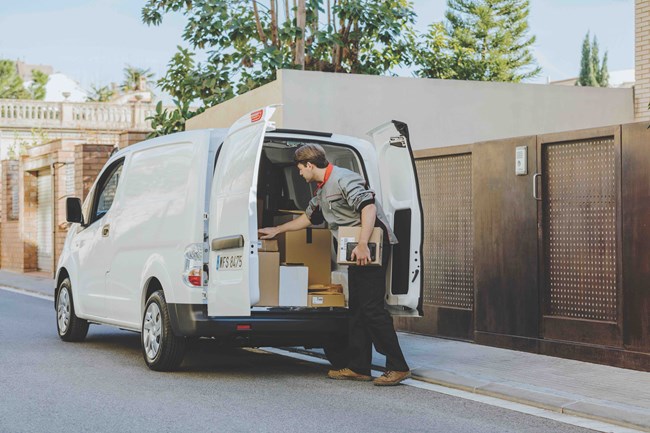- Orders open for Ineos Grenadier Commercial
- Toyota Hilux range gains new rally-inspired GR Sport II variant
- Remarketing: Pick of the bunch
- GA Commercial acquires first vans through Vanaways
- 'Luxury' tax on expensive pick-up trucks suggested
- ADVERTISEMENT FEATURE: Essential advice to avoid the van fleet ICE-berg
- ETRUX launches new Ford E-Transit Trizone
- Renault gives UK debut to Master E-Tech at CV Show
- Isuzu D-Max long-term test – Latest Report
- Isuzu D-Max V-Cross Steel Edition revealed
ADVERTISEMENT FEATURE: Some of the pressing questions facing van fleets as they look to remain competitive amidst mounting cost pressures
Date: Thursday, April 27, 2023
By Beverley Wise, Webfleet Regional Director for Bridgestone Mobility Solutions.

Why should productivity be a fleet priority?
The current economic environment is a challenging one. High inflation and interest rates have led to fragile consumer confidence and a testing ‘cost of business’ squeeze.
Strong productivity has, consequently, become more important than ever as companies navigate these choppy waters and strive to achieve business growth and profitability.
Van fleets sit at the very heart of commercial operations and their performance can help shape a company’s destiny. What’s more, a productive fleet can signal a happy, engaged workforce, that supports talent recruitment and retention.
But can we increase productivity AND cut costs?
For government, the adoption of digital technologies by UK businesses has become a central pillar of their vision for boosting GDP.
And fleets, both large and small, have grasped the baton in earnest. They have been at the epicentre of the digital revolution, recognising the power of tech to increase output and deliver more efficient ways of working.
Indeed, technologies that are used effectively can result in significant returns on investment – and within just a matter of weeks. Investments by business fleets in telematics systems, for example, can be quickly offset not only by improvements in productivity through more efficient working processes, but also through savings on fuel, maintenance and insurance.
Despite the economic malaise, investments are continuing apace. Recent research from Bridgestone and Webfleet has revealed that the opportunities technologies – and the data insights they impart – present are widely recognised. Almost three-quarters of fleets (71%) say they plan to deploy new solutions over the next 12 months.
But how can telematics solutions make us more efficient?
With resources stretched, digital systems that deliver critical fleet management information can be invaluable.
With Webfleet, for example, access to accurate vehicle and driver insights, including fuel consumption, driving times, vehicle locations and driving behaviour, can lead to more informed decision-making.
Jobs and orders can be sent with automatic routing information directly to drivers’ dedicated terminals or to a mobile app.
Routing and scheduling tools allow managers to improve the visibility of daily workflow and optimise the sequence of jobs. Customers can be kept up to date with automatic email or text notifications, making them aware of ETAs and changes to schedules. Information from the customer can be relayed into ERP, CRM or accounting software suites and invoices can be automated, with accurate data detailing time spent with clients.
Handheld driver devices can host applications to simplify and streamline a range of daily tasks. Apps on the Webfleet PRO M, for example, can be used for order management, for proof of delivery and to conduct vehicle checks. This can help free up time for both drivers and the back office.
These examples just scratch the surface of the potential productivity gains that can be achieved.
More than half of van fleets (59%) are still predicting growth for their operations in the year ahead, but with the economy predicted to take more than a year to recover to pre-Covid levels, they will need all the tools in their armoury to do so.
Call 0208 822 3605 or visit www.webfleet.com
View The WhatVan Digital Edition


